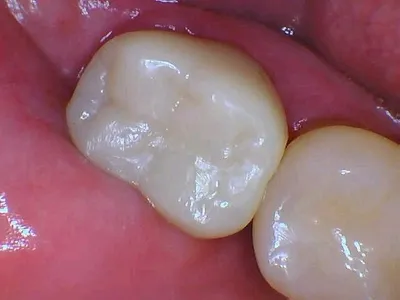Crowns and Bridges
Crowns and Bridges in Prairieville, LA
Why Is a Crown Needed?
When damage to a tooth is so extensive that a filling cannot be done, a porcelain crown or “cap” is needed. This is recommended when the damage is extensive but the tooth can still be saved. What causes this damage? The most common reasons are decay that has spread significantly, trauma that has occurred, or an old filling is breaking down.
The crown serves to restore structure that has been compromised due to the damage, thus prolonging the life of the tooth. A crown can also be used for esthetic reasons. For instance, if you do not like your smile due to spacing, crowding, or misaligned teeth, a crown can drastically improve your smile.
In the past, crowns were made of all metal materials and consisted of either gold or silver. Gradually, the shift went to crowns made of porcelain stacked on top of metal, for a more esthetic look. However, these crowns still had a visible grey or black band of metal at the edge where the crown met the tooth.
Today, we are able to offer much more natural-looking crowns. Porcelain crowns offer the best of both worlds: a material that matches the strength and durability of a metal crown, and an esthetically-pleasing option. One added benefit is that for those allergic to metal, or those who have a concern about having metal in their mouth, this is an excellent choice.
Gold crowns also have their place in dentistry. A tooth that is in the back and short can certainly benefit from a gold crown, which conserves tooth structure.
At Prestige Dentistry, we offer both options of porcelain crowns or gold. The choice is based on the individual patient and what is best for their dental health. Dr. Reena Oza will be happy to sit down with you and evaluate the options.
What is a Bridge?
Bridges function similarly to crowns, in that they help to protect a damaged tooth and restore the damaged structure. The difference is that in a bridge, one or a few missing teeth can be replaced. In other words, a bridge connects from one tooth to another and fills in the missing tooth or teeth with an artificial tooth.
In cases where an implant cannot be used safely, such as when there are contributing health factors, a bridge can be utilized.
What is the Process of Having a Crown or Bridge Made?
During your appointment for a crown, Dr. Oza will anesthetize the involved area to make you comfortable. The decay or old restoration will be removed, and replaced with a new filling, otherwise known as a buildup. The tooth will then be properly shaped to allow room for the crown or bridge, and Dr. Oza will make you a temporary crown. A mold, or impression, of your teeth will be taken and sent to a lab so that your permanent crown can be fabricated. You will then return for the temporary crown to be removed and the permanent crown to be cemented.
In the case of a bridge, the process is very similar to the crown procedure. The only difference is that the anchoring teeth are prepared for the bridge, instead of a single tooth.
How Long Do Crowns and Bridges Last?
Just like all dental restorations, crowns have a lifespan. Several factors impact the life of a crown. These include the amount of tooth structure left, and a person’s risk factors for developing future cavities around the edges of a crown. Also, habits such as grinding your teeth and chewing on ice can decrease the life of a crown.
Typically, most crowns can be expected to last from five to fifteen years. Keeping up with your regular dental hygiene visits ensures that the crowns are looked after, and potential problems that may affect your crown are detected early.
The lifespan and factors of a bridge are similar to those of a crown.
Please Call to Make Your Appointment
If you are tired of having a damaged or missing tooth affect your life, there is no need to live with these problems! A crown or bridge can restore those teeth to health again. Call our Prairieville dental office today, and we will be pleased to arrange a convenient appointment for you.


